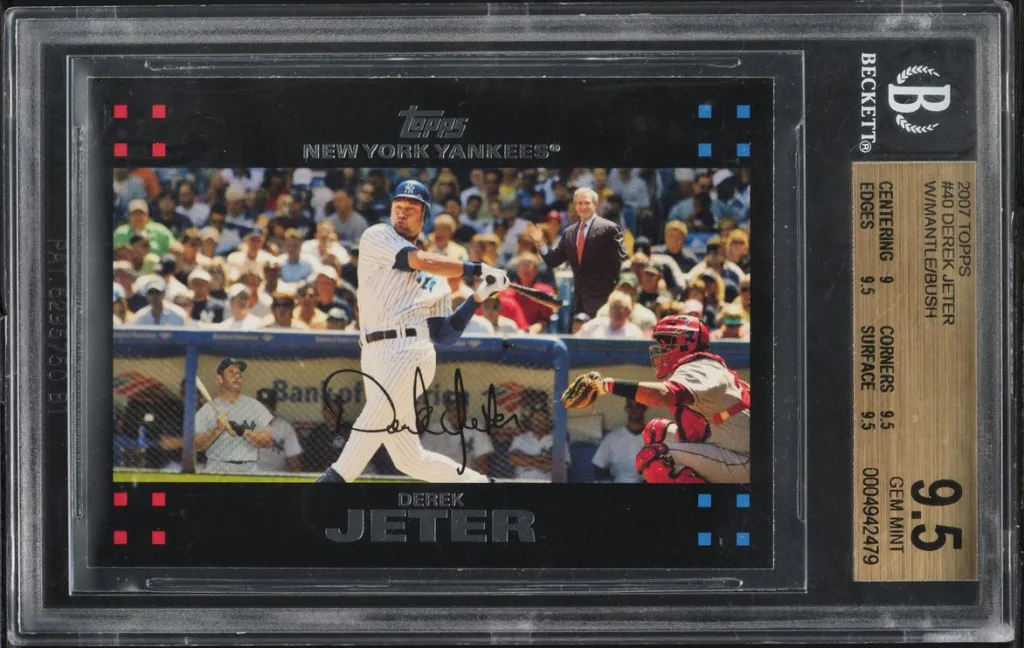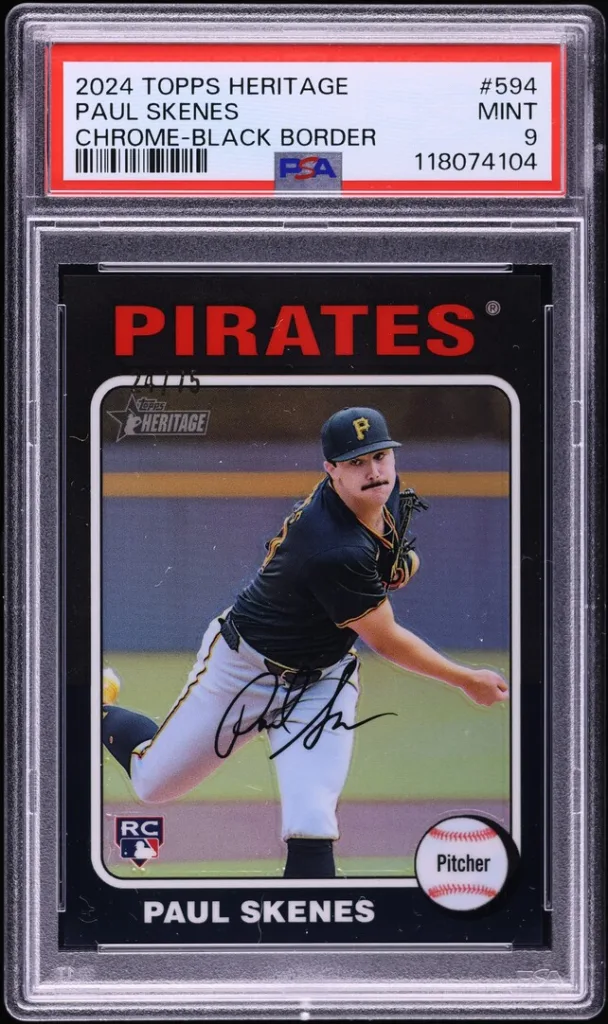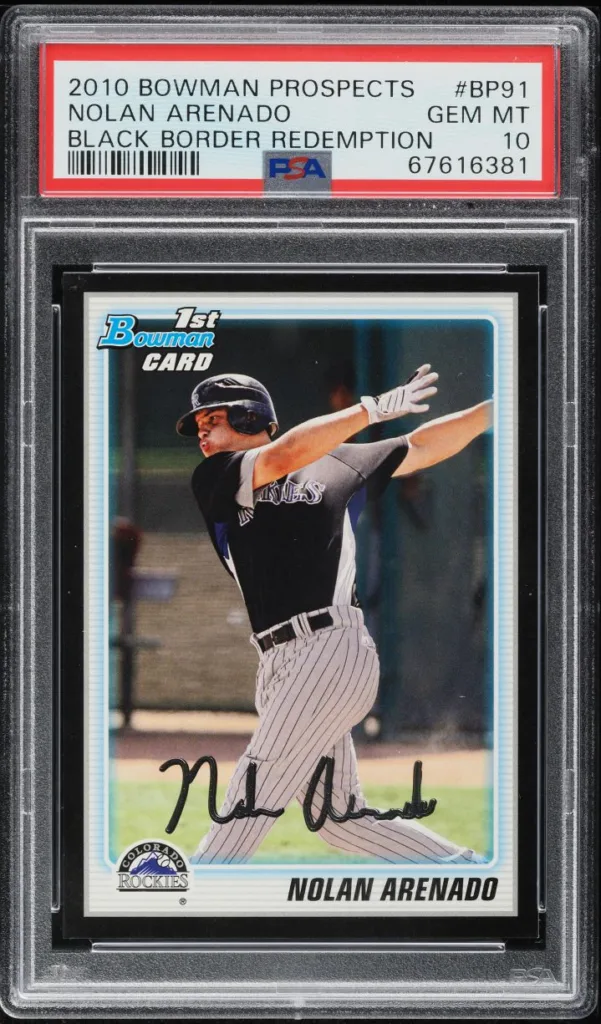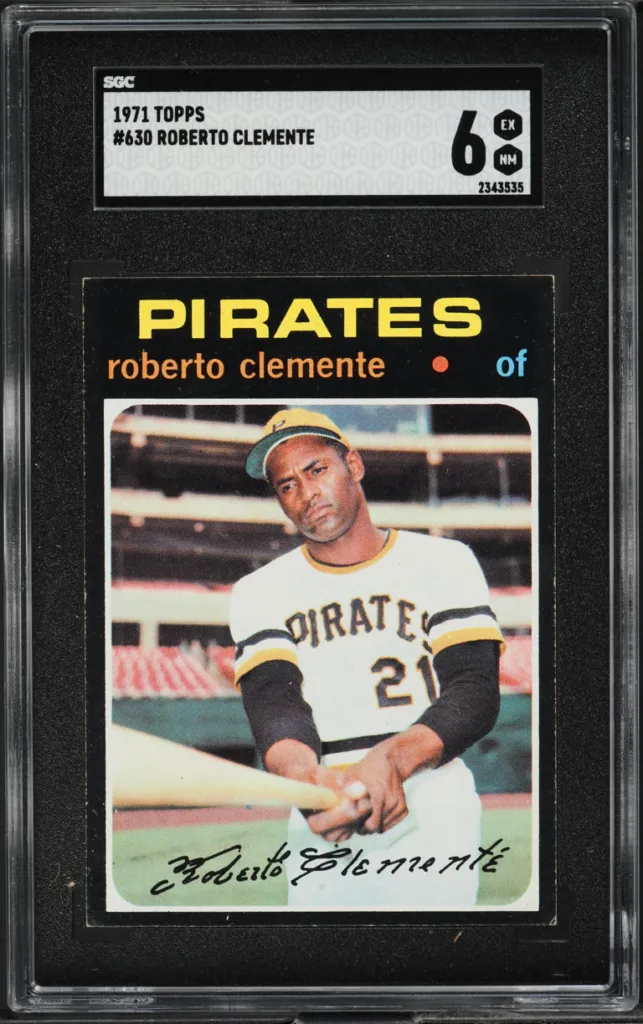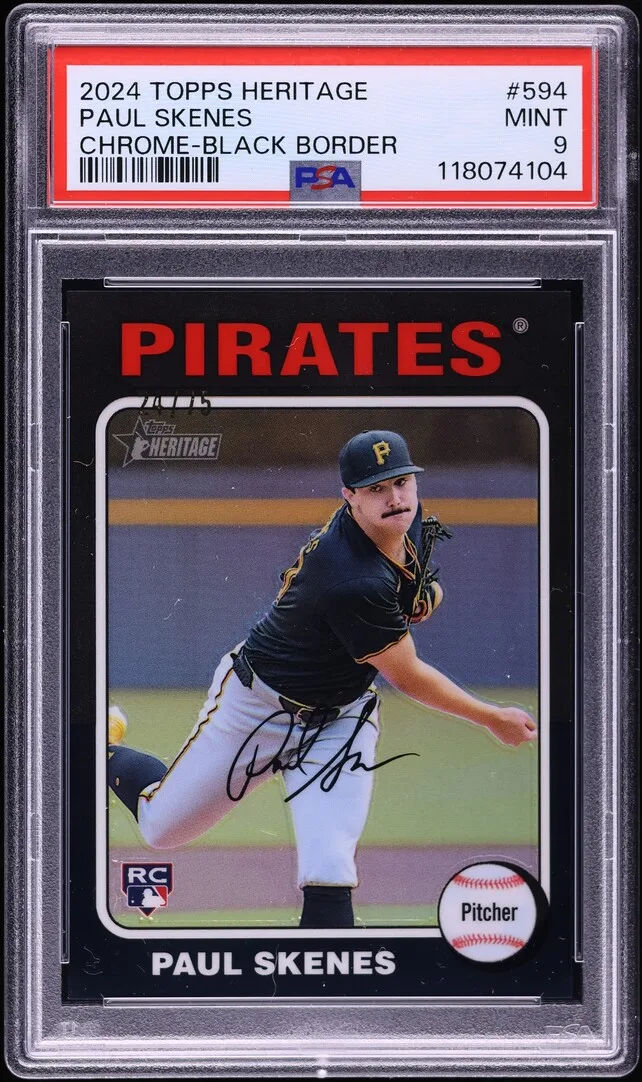
High-Risk, High-Reward Collecting
In the vast world of baseball card collecting, few design choices evoke as much emotion, excitement, and anxiety as the black border. These cards are visually striking — sleek, bold, timeless — but also unforgiving. Even the tiniest nick or white fleck along the edge pops like a beacon. Black border cards have always been a high-risk, high-reward proposition for collectors: beautiful to behold, brutal to grade.
From the iconic 1971 Topps set to the stealthy cool of the 2007 base card design, and including modern Heritage parallels and Bowman Prospect gems, black border cards occupy a unique place in Hobby lore. They test the patience and precision of collectors and dealers alike, and that’s a big part of the thrill.
Let’s take a closer look at the Topps cards that dared to paint it black.
The 1971 Topps Set: Where it all Began
The 1971 Topps Baseball set is legendary for many reasons, but the black border design is certainly its defining feature. The set introduced a radical new look at the time — a sharp break from the white-bordered norm of the late ’60s — and it’s since become one of the most difficult vintage sets to complete in high grade.
At 752 cards, the ‘71 set was also the largest Topps had produced up to that point. Star cards like #5 Thurman Munson (with its gold trophy cup), #20 Reggie Jackson, #100 Pete Rose, #400 Hank Aaron, and #513 Nolan Ryan all stand out. But condition is king, and the black borders are merciless. Even fresh-from-the-pack cards often show chipping, making PSA 9s and 10s extremely rare.
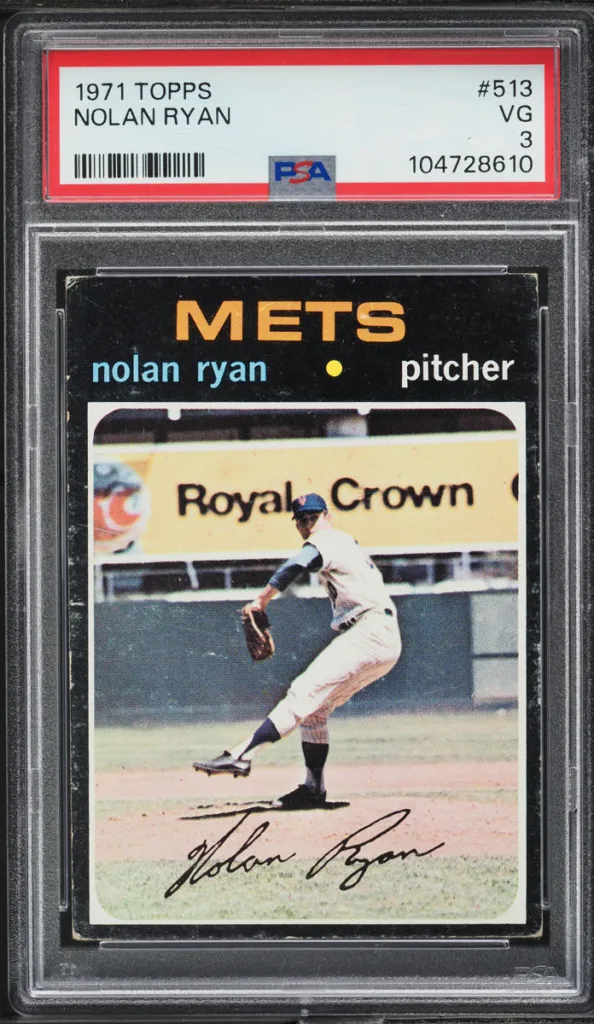
The Willie Mays card (#600) from this set remains one of the most coveted examples, and high-grade versions routinely command serious money. For some collectors chasing a monumental challenge with historical heft, the 1971 Topps baseball set has become, ironically, an elusive white whale.
The 2007 Topps Set: A Modern Callback
Fast forward to 2007, and Topps brought the black border concept back to the base set in a contemporary form. The 2007 design features team-colored nameplates at the bottom, with crisp white font set against a bold black frame. The cards feel modern and retro at once — a clean update that nods to ‘71 without copying it.
The set has plenty to offer. There’s #40 Derek Jeter, which features the curious superimposed inclusions of both Mickey Mantle in the dugout and President George W. Bush in the seats over the dugout. There are also impressive cards like #160 Justin Verlander, #10 CC Sabbathia, and #50 Miguel Cabrera.
Like their 1971 counterparts, the 2007 Topps cards chip easily. Even gentle handling can expose white edges, and graded 10s are prized accordingly.
Black Border Parallels: Heritage and Beyond
Black border designs aren’t just a thing of the past. The 2024 Topps Flagship base set featured a partial black border, and Topps has continued to play with the concept, often through limited-edition parallels.
Recent Topps Heritage sets have included black border variations, typically as limited print runs exclusive to specific retail formats. For instance, 2024 Topps Heritage offered black border parallels /75 as part of Walmart-exclusive hanger boxes. These cards recreate classic designs from the past — 2024’s Heritage set mimics the 1975 Topps design — but with the added twist of a striking and delicate matte black frame.
Due to their scarcity, Heritage black borders are often short-printed. That means even base-level stars can fetch a premium. Pulling a black border Shohei Ohtani, Elly De La Cruz, or Aaron Judge in near-mint condition can seem like a minor miracle.
Similarly, Topps Chrome® and Topps Flagship lines occasionally feature black-bordered parallels as serial-numbered inserts, often /66 or /199 depending on the product year and release. These chase cards combine the visual drama of black borders with the prestige of short prints and refractor treatments.
The 2010 Bowman Prospects Black Borders
Bowman has long been the go-to brand for prospecting, and in 2010, the brand introduced black border parallels in its Bowman Prospects subset.
These black-bordered parallels were not serial numbered but were distributed in specific pack configurations (usually Hobby-only), and they’ve since developed a strong following. Notably, the 2010 Bowman Chrome #BP1 Stephen Strasburg was one of the hottest cards in The Hobby during his debut summer. While Strasburg’s career didn’t ultimately live up to the early hype, the black-bordered version of that card still holds nostalgic and collector appeal.
Other names in the 2010 Bowman Prospects set include Giancarlo Stanton (then Mike Stanton) and Nolan Arenado, whose black border parallels remain tough to track down in pristine shape.
Why Black Borders Matter
What makes black border cards so compelling?
For starters, the aesthetic is unmatched. Black frames create contrast and drama, especially when paired with sharp photography and bold team colors. They elevate even common cards, giving them the look of something significant.
But there’s also the challenge. Black border cards separate the casual from the committed. They reward careful handling, tight storage, and grading savvy. They punish careless shuffling or loose top loaders. Every minor edge flaw becomes visible, and collectors chasing Gem Mint grades know that a black-bordered 10 is worth twice the sweat and three times the bragging rights.
In a hobby where condition is everything, black borders set a higher bar.
Collecting Tips for Black Border Cards
If you’re diving into black border collecting, here are a few best practices:
- Penny sleeve immediately: Never leave a black border card out raw for long. Even brief exposure can lead to edge wear.
- Check centering carefully: Many black border designs make centering issues more obvious — especially to graders.
- Consider graded singles: For vintage or tough modern cards, buying graded examples may be the safer long-term play.
- Be patient with building sets: Completing a high-grade black border set can take years. Enjoy the chase.
Final Word
Topps’ black border cards are where design, difficulty, and desire all collide. From the classic edgewear of 1971 to the slick challenge of 2007 and the stealthy parallels in Heritage and Bowman, these cards demand respect. They look sharp, handle poorly, and grade hard — and that’s exactly what makes them fun.
So whether you’re cracking packs, scouring shows, or chasing PSA 9s and 10s (good luck!) online, just remember: In black border collecting, perfection is a journey.
